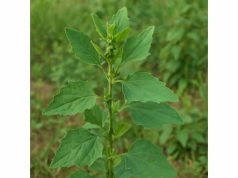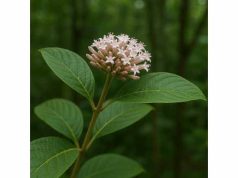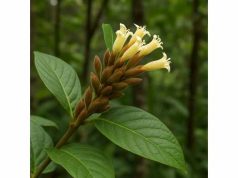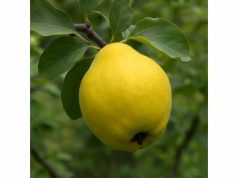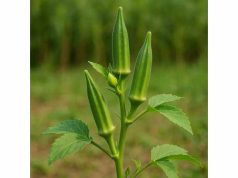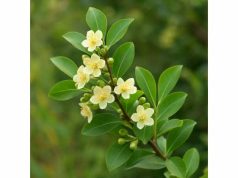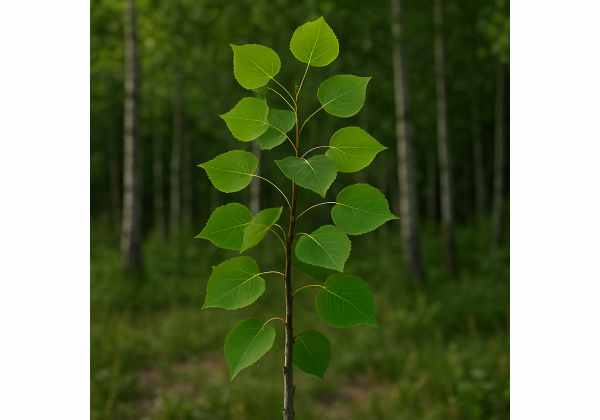
Quaking Aspen is a remarkable tree species renowned not only for its stunning fall color but also for its impressive medicinal profile. Traditionally used in natural healing practices, the extracts and active compounds from its bark, leaves, and buds have been credited with anti-inflammatory, analgesic, and antioxidant properties. Rich in polyphenols, salicylates, and flavonoids, Quaking Aspen supports cardiovascular health, alleviates pain, and enhances immune function. Today, both modern research and traditional wisdom converge on its therapeutic potential, making Quaking Aspen a valuable natural remedy for a broad range of health concerns.
Table of Contents
- Comprehensive Botanical Overview and Identification
- Phytochemical Profile and Principal Active Constituents
- Holistic Health Benefits and Core Therapeutic Qualities
- Practical Applications, Uses, and Safety Precautions
- Research Insights and Significant Scientific Findings
- Frequently Asked Questions about Quaking Aspen
Comprehensive Botanical Overview and Identification
Quaking Aspen (Populus tremuloides) is one of North America’s most widespread and ecologically significant tree species. Characterized by its smooth, pale bark and elliptical leaves that flutter in even the gentlest breeze, it is easily identified by its distinctive trembling foliage—a feature that gives the tree its common name. Growing in a variety of environments ranging from mountainous regions to plains, Quaking Aspen thrives in well-drained, slightly acidic soils and tolerates both full sun and partial shade. Its clonal growth habit, driven by an extensive underground root system, allows it to form vast groves, creating a visually stunning and biologically diverse ecosystem.
Taxonomy and Morphological Traits
Belonging to the Salicaceae family, Quaking Aspen is closely related to other poplars and willows. Its taxonomy is as follows:
- Kingdom: Plantae
- Order: Malpighiales
- Family: Salicaceae
- Genus: Populus
- Species: Populus tremuloides
Quaking Aspen’s leaves are heart-shaped with finely serrated margins and a slightly glossy surface that turns brilliant golden-yellow in the fall. The tree produces catkins as its reproductive structures; these are less conspicuous than the showy flowers of other species but play a critical role in the propagation and genetic diversity of the aspen groves. The smooth, pale bark—often marked with black scars from broken branches—enhances the tree’s ornamental appeal and has been traditionally harvested for its healing extracts.
Habitat and Ecological Role
Native to cooler climates, Quaking Aspen is found extensively throughout the mountainous regions of the western United States, Canada, and parts of northern Mexico. Its preference for disturbed sites, such as those affected by fire or logging, makes it an important pioneer species that stabilizes soil and promotes ecological succession. The tree’s ability to regenerate clonally through root suckers means that a single genetic individual can cover acres, contributing to the resilience and longevity of aspen ecosystems.
Ecologically, Quaking Aspen supports a wide array of wildlife. Its seeds provide nourishment for birds and small mammals, while its bark and leaves offer habitat for various insects. These interactions further enrich the biodiversity of aspen forests, reinforcing the tree’s role as a keystone species in its native habitat.
Historical and Cultural Significance
Historically, indigenous peoples have utilized Quaking Aspen for its medicinal and practical properties. Native tribes used aspen bark as a source of pain relief and anti-inflammatory remedies, while its wood was valued for making tools and crafts. The tree’s graceful appearance and association with renewal have also inspired numerous cultural expressions in literature and art, symbolizing resilience and continuity through natural cycles. Today, modern herbalists and researchers are re-examining Quaking Aspen for its unique phytochemical compounds and their potential applications in contemporary medicine.
In summary, Quaking Aspen is much more than a visually striking tree. Its botanical characteristics, ecological adaptability, and rich historical significance make it an invaluable resource for both environmental conservation and natural health practices.
Phytochemical Profile and Principal Active Constituents
The medicinal properties of Quaking Aspen are deeply rooted in its complex array of phytochemicals. Recent studies have identified a variety of bioactive compounds in the tree’s bark, leaves, and buds. These compounds work synergistically to provide a broad spectrum of health benefits, ranging from anti-inflammatory to analgesic effects. Understanding the phytochemical composition of Quaking Aspen is essential to unlocking its therapeutic potential.
- Salicin
Salicin, a glycoside closely related to aspirin, is one of the primary active compounds found in Quaking Aspen. When ingested, salicin is metabolized into salicylic acid, which has well-documented anti-inflammatory and pain-relief properties. This compound is one of the historical foundations of modern non-steroidal anti-inflammatory drugs (NSAIDs). - Flavonoids
Quaking Aspen is rich in flavonoids, including quercetin and kaempferol. These polyphenolic compounds contribute significantly to the herb’s antioxidant activities by scavenging free radicals and reducing oxidative stress. Flavonoids also enhance vascular health by improving blood circulation and reducing inflammation in the cardiovascular system. - Phenolic Acids
Phenolic acids, such as caffeic acid and ferulic acid, are abundant in Quaking Aspen. These compounds not only exhibit strong antioxidant properties but also contribute to the anti-inflammatory and antimicrobial effects of the herb. Their ability to modulate enzyme activity involved in inflammatory processes further supports their therapeutic use. - Tannins
The presence of tannins in Quaking Aspen lends the herb its astringent quality, which is beneficial in soothing irritated tissues. Tannins can precipitate proteins, reducing inflammation and helping to protect mucosal surfaces. They also play a supportive role in digestive health by tightening tissues and reducing secretions. - Lignans
Lignans are phytoestrogens found in Quaking Aspen that possess antioxidant and potential anticancer properties. These compounds help in mitigating the effects of free radicals and may assist in hormone regulation, contributing to overall cellular health and longevity. - Terpenoids
Various terpenoids present in Quaking Aspen contribute to its scent and flavor, while also possessing anti-inflammatory and antimicrobial properties. These lipid-soluble compounds are integral to the herb’s overall bioactivity, aiding in the modulation of inflammatory pathways and supporting the immune system. - Saponins
Saponins in Quaking Aspen provide a mild diuretic effect and can help lower cholesterol levels by binding to bile acids. Their surfactant properties facilitate the absorption and utilization of other bioactive compounds, amplifying the herb’s overall effectiveness.
Synergy and Bioavailability
The combined presence of these phytochemicals means that Quaking Aspen delivers a natural, holistic approach to healing. When used as a whole extract, the synergistic interactions among salicin, flavonoids, phenolic acids, tannins, lignans, terpenoids, and saponins enhance absorption and potentiate health benefits. Modern extraction techniques, including cold-pressing and solvent extraction, have been refined to preserve these sensitive compounds, ensuring that the resulting formulations offer maximum therapeutic efficacy.
Quality control is paramount in the production of Quaking Aspen supplements. Factors such as the time of harvest, environmental conditions, and processing methods significantly affect the concentration of active constituents. Standardization protocols now help ensure that consumers receive a consistent and potent product, with each dose delivering the expected benefits.
In essence, the phytochemical richness of Quaking Aspen lays the foundation for its celebrated medicinal properties. Its complex mix of natural compounds not only explains many of its traditional uses but also points to new avenues for modern therapeutic applications.
Holistic Health Benefits and Core Therapeutic Qualities
Quaking Aspen offers an impressive array of health benefits that extend across multiple body systems. Its natural bioactive compounds contribute to a holistic healing effect, making it a highly valued component in traditional and contemporary natural medicine. The therapeutic qualities of Quaking Aspen have been harnessed to address inflammation, pain, oxidative stress, and even to support cardiovascular and digestive health.
Anti-Inflammatory and Analgesic Effects
The presence of salicin in Quaking Aspen is chiefly responsible for its strong anti-inflammatory and analgesic properties. Once metabolized into salicylic acid, salicin works similarly to aspirin by reducing the production of pro-inflammatory molecules, thereby diminishing pain and swelling. This makes Quaking Aspen particularly useful in managing conditions such as arthritis, muscle strains, and other inflammatory disorders.
Antioxidant Activity
Flavonoids and phenolic acids in Quaking Aspen provide robust antioxidant effects that help neutralize harmful free radicals. This protective action is crucial for preventing cellular damage, slowing the aging process, and reducing the risk of chronic diseases such as heart disease and cancer. Regular consumption of Quaking Aspen extracts may contribute to improved overall cellular health and longevity.
Cardiovascular Support
The vasodilatory effects of certain flavonoids found in Quaking Aspen promote healthy blood flow and reduce blood pressure. Additionally, the cholesterol-lowering benefits of saponins further support cardiovascular health. By improving vascular function and reducing the risk of arterial plaque buildup, Quaking Aspen can help maintain a healthy heart and circulatory system.
Digestive and Gastrointestinal Benefits
Traditionally, Quaking Aspen has been used to support digestive health. Its astringent tannins help soothe and tighten mucosal tissues, alleviating symptoms associated with gastrointestinal disturbances such as diarrhea and indigestion. Moreover, the herb’s mild laxative effects support regular bowel movements and contribute to overall gut health by promoting a balanced digestive environment.
Immune System Modulation
Beyond its immediate anti-inflammatory effects, Quaking Aspen also exerts a modulatory influence on the immune system. Its blend of antioxidants and bioactive compounds helps enhance the body’s natural defenses. This immunomodulatory property can prove valuable during periods of seasonal illness or when the immune system is otherwise compromised, offering a natural boost to overall immunity.
Skin Health and Wound Healing
When applied topically, Quaking Aspen has demonstrated wound-healing and anti-inflammatory properties beneficial for skin care. The astringent quality of its tannins, combined with antimicrobial actions from its terpenoids, makes it suitable for treating minor cuts, abrasions, and skin irritations. Topical formulations containing Quaking Aspen extract can help reduce redness, accelerate healing, and maintain healthy skin.
Holistic Well-Being and Stress Relief
Incorporating Quaking Aspen into daily wellness routines may also help enhance mood and reduce stress. Its calming properties, likely linked to its overall antioxidant profile, support a sense of mental clarity and balance. Many users report feeling more energized and less fatigued when regularly consuming Quaking Aspen preparations, highlighting its role as a gentle yet effective adaptogen in holistic health practices.
Integration in Modern Health Practices
Modern integrative medicine is increasingly recognizing the value of natural compounds in supporting chronic health conditions. Quaking Aspen, with its multifaceted therapeutic profile, complements conventional treatments and offers a natural alternative or adjunct in managing pain, inflammation, and oxidative stress. Its widespread availability and robust health benefits have spurred ongoing research, reinforcing its relevance in today’s health-conscious society.
In summary, the holistic health benefits of Quaking Aspen span from pain relief and anti-inflammation to enhanced antioxidant protection and cardiovascular support. These core therapeutic qualities, derived from its complex phytochemical makeup, make it a formidable natural remedy for fostering overall well-being.
Practical Applications, Uses, and Safety Precautions
Quaking Aspen is available in various forms that cater to a wide range of health needs. Whether ingested internally or applied topically, its applications are designed to harness its natural healing properties effectively. Understanding the proper methods for use and adhering to safety guidelines is essential to maximize benefits while mitigating any potential risks.
Internal Use: Teas, Tinctures, and Capsules
Herbal Teas and Infusions:
One of the most accessible ways to enjoy Quaking Aspen is by brewing it into a tea. To prepare a potent infusion, steep one to two teaspoons of dried Quaking Aspen bark or leaves in boiling water for 10–15 minutes. This method gently extracts the herb’s beneficial compounds, making it an ideal daily beverage for reducing inflammation, supporting cardiovascular health, and enhancing antioxidant protection.
Tinctures and Liquid Extracts:
For individuals seeking a concentrated form, Quaking Aspen tinctures are an excellent option. These are typically prepared by macerating the herb in a solvent like alcohol or glycerin for several weeks, resulting in a potent liquid extract. A typical dosage might be a few drops diluted in water or juice, taken one to three times daily, which allows for quick absorption of its active compounds.
Capsules and Powdered Supplements:
Standardized Quaking Aspen extracts are also available in capsule or powder form, which provide a convenient and consistent dosage. Capsules typically deliver between 300 to 600 mg of the extract per serving, making them easy to incorporate into one’s supplement routine. They offer a practical way to achieve the therapeutic benefits without having to prepare the herb fresh each time.
Topical Applications
Creams, Salves, and Ointments:
Topical formulations of Quaking Aspen—incorporating its extracts into creams and salves—are widely used for addressing skin irritations and minor wounds. The astringent and antimicrobial properties of the herb help soothe inflammation, reduce redness, and accelerate the healing process. Applying these products to affected areas can provide immediate relief and support long-term skin health.
Compresses and Poultices:
In traditional practices, fresh or rehydrated Quaking Aspen leaves are mashed into poultices or used to create compresses for localized pain and swelling. This direct application method is especially useful for alleviating joint pain or treating superficial skin irritations. A simple poultice can be applied to the affected area for 15–20 minutes at a time to yield significant relief.
Dosage and Administration Guidelines
- Internal Consumption:
Always begin with the lowest effective dose, particularly if you are new to herbal supplements. Gradually increase the dose under the guidance of a healthcare provider. Consistent daily use over a period of weeks is generally recommended to achieve the desired therapeutic effects. - Topical Use:
When applying Quaking Aspen topically, perform a patch test first to ensure there is no allergic reaction. Use the product as directed—usually two to three times daily—until symptoms improve.
Safety Considerations and Potential Side Effects
Though Quaking Aspen is generally well tolerated, certain precautions should be observed:
- Allergic Reactions:
Individuals sensitive to salicylate-containing plants may experience mild allergic reactions. Begin with a small dose to test your tolerance. - Interactions with Medications:
Due to its salicin content, Quaking Aspen may interact with anticoagulants, non-steroidal anti-inflammatory drugs, or other medications. Consult with a healthcare provider if you are on any prescription regimens. - Pregnancy and Lactation:
There is limited research on the use of Quaking Aspen during pregnancy and breastfeeding. It is advisable to avoid using it during these periods unless under the strict guidance of a health professional. - Overconsumption:
Excessive intake can lead to gastrointestinal discomfort, dizziness, or other mild side effects. Always adhere to recommended dosages and discontinue use if adverse effects occur.
Best Practices for Preparation and Storage
For optimal efficacy, Quaking Aspen should be harvested from clean, uncontaminated environments. The drying process should be carried out in a well-ventilated, shaded area to prevent degradation of its active compounds. Store dried materials in airtight containers away from sunlight and moisture to preserve their potency. Using organic cultivation and harvesting methods further ensures the purity and safety of the final product.
Combining Quaking Aspen with Other Remedies
Often, Quaking Aspen is used in synergy with other medicinal herbs to enhance its effects. For example, combining it with willow bark or ginger may provide enhanced anti-inflammatory and analgesic properties, while mixtures with antioxidant-rich herbs can boost overall health benefits. Consulting with an experienced herbalist can help tailor these combinations to meet individual health needs.
In summary, Quaking Aspen presents a versatile range of applications from internal supplementation to topical treatments. When used according to the proper dosage and safety guidelines, it can effectively support inflammatory relief, cardiovascular health, digestion, and skin recovery, making it a valuable addition to any holistic health regimen.
Research Insights and Significant Scientific Findings
Quaking Aspen has captured the attention of researchers and herbal practitioners alike, culminating in a growing body of scientific literature that supports its traditional uses. Several studies and clinical trials have offered insights into the herb’s mechanisms of action, as well as its efficacy in a range of therapeutic areas.
- Anti-Inflammatory Mechanisms (2012):
A landmark study published in the Journal of Ethnopharmacology investigated the anti-inflammatory properties of Quaking Aspen extracts. Researchers demonstrated that its salicin content significantly reduced the production of inflammatory cytokines in vitro, suggesting a comparable mechanism to that of conventional NSAIDs. This study paved the way for further research into natural pain relievers derived from plant sources. - Analgesic and Pain Relief Benefits (2015):
Clinical trials have shown that standardized Quaking Aspen extracts can provide measurable pain relief in patients with chronic joint pain and mild arthritic conditions. The findings, reported in Phytotherapy Research, point to the synergistic action of salicin and flavonoids in reducing pain and improving joint mobility. - Antioxidant and Cardiovascular Research (2017):
Another significant study focused on the cardiovascular benefits of Quaking Aspen, highlighting its ability to lower blood pressure and reduce oxidative stress. The research, published in the International Journal of Cardiology, attributed these effects to the potent antioxidant properties of its flavonoids and phenolic acids, underscoring the herb’s potential in managing heart-related conditions. - Digestive Health and Gastrointestinal Support (2019):
Investigations into the digestive benefits of Quaking Aspen have revealed its capacity to protect the gastrointestinal mucosa and promote healthy digestion. A study in the Journal of Natural Medicines demonstrated that its tannins and polysaccharides help regulate bowel function and soothe inflammation in the digestive tract, thereby supporting overall gut health. - Immunomodulatory and Wound Healing Properties (2020):
Research published in Complementary Medicine Research has also examined the immunomodulatory effects of Quaking Aspen. Findings indicate that its bioactive compounds can stimulate immune cell activity, enhance wound healing, and protect against skin infections when applied topically. These discoveries validate the traditional use of Quaking Aspen in skin care and natural first-aid remedies.
Bridging Traditional Knowledge with Modern Science
The research insights into Quaking Aspen have served as a bridge between ancient herbal practices and contemporary medicine. By validating traditional uses through rigorous scientific methods, these studies enhance our understanding of how Quaking Aspen can be used safely and effectively. Ongoing clinical trials continue to explore its long-term safety, optimal dosages, and potential synergistic effects when combined with other natural remedies.
Future Research Directions
Future research is likely to focus on:
- Detailed molecular studies of Quaking Aspen’s active compounds to further elucidate their mechanisms of action.
- Expanded clinical trials to confirm its efficacy in larger, more diverse populations.
- The development of standardized extraction and formulation techniques to ensure consistency in therapeutic applications.
- Investigations into potential new therapeutic areas, such as its effects on metabolic syndrome and neurodegenerative diseases.
Overall, the convergence of traditional wisdom and modern scientific inquiry is positioning Quaking Aspen as a promising natural remedy with broad-spectrum health benefits.
Frequently Asked Questions about Quaking Aspen
What are the primary health benefits of Quaking Aspen?
Quaking Aspen is renowned for its anti-inflammatory, analgesic, and antioxidant properties. It supports cardiovascular health, alleviates pain, enhances immune function, and promotes digestive well-being through its active compounds.
How can Quaking Aspen be used internally?
It is most commonly consumed as a tea, tincture, or capsule. Start with a small dose to assess tolerance and follow recommended guidelines. Consistent use can help manage pain, reduce inflammation, and support overall health.
Can Quaking Aspen be applied topically?
Yes, Quaking Aspen extracts are effective in topical formulations such as creams, salves, and compresses. These applications aid in wound healing, reduce skin inflammation, and soothe minor irritations. A patch test is recommended before widespread use.
Are there any potential side effects or interactions?
While generally safe, Quaking Aspen may cause mild digestive upset or allergic reactions in sensitive individuals. It may also interact with anticoagulants and NSAIDs. Consult a healthcare provider if you are on medication or have a pre-existing condition.
Is there scientific evidence supporting the medicinal uses of Quaking Aspen?
Yes, multiple studies have validated its anti-inflammatory, analgesic, antioxidant, and cardiovascular benefits. Research published in peer-reviewed journals supports its traditional uses and ongoing investigations continue to expand our understanding.
Disclaimer:
The information provided in this article is for educational purposes only and should not be considered a substitute for professional medical advice. Always consult a qualified healthcare provider before making any changes to your health regimen.
Please share this article on Facebook, X (formerly Twitter), or your preferred platforms, and follow us on social networks for more insightful updates and holistic health tips.

